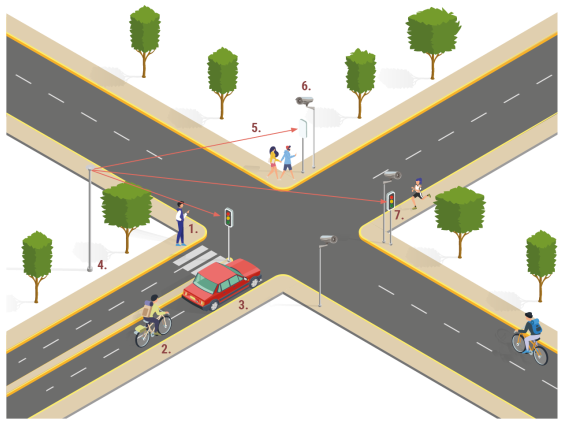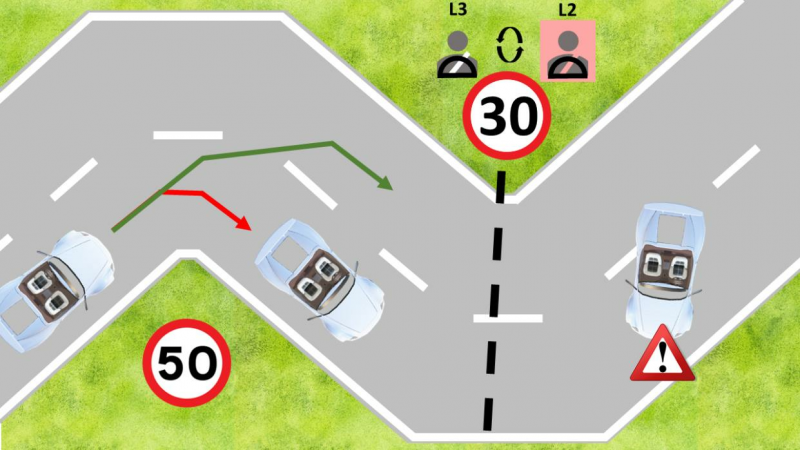
SECREDAS
Securing security, safety and privacy technology to create trust in autonomous vehicles
Roy Pennings
01 May 2018
31 October 2021
EC funded project
One in four potential buyers/users of autonomous vehicles in Europe don’t trust them to be secure, safe or privacy compliant and are therefore reluctant to buy one. This lack of trust is an enormous challenge for European OEMs that aim to remain competitive and world leaders. More so, since newcomers such as Google and Apple enter their market.
The 70+ partner organisations in SECREDAS are taking a huge step in the development of cybersecurity and safe technology for connected and automated vehicles. SECREDAS affects two important life domains: transportation (auto & rail) and personal health.
Connected and autonomous driving is a hot topic in the automotive industry and one leverage to mitigate the negative impacts and associated external costs of road transportation. However, the new technology leads to risks on security and privacy: the automated car is a “thing” in the Internet of Things (IOT) that can cause lethal damage and will collect massive amounts of data. Securing vehicles requires integrated solutions covering sensors, communication and processing. In addition: accidents are also often caused by tiredness, distraction, or bad state-of-mind drivers. Monitoring physical parameters of the driver will also detect and prevent risk situations.
SECREDAS' Personal health solutions focus on creating value for patients and other stakeholders. Such solutions increasingly use cloud solutions for data storage and applications. However, anonymized data can be de-anonymized easily, since sophisticated algorithms can cross-refence generated biometric data with digital traces of users’ behaviour. Strong legislation for privacy and security require solid solutions in order to develop trust among professionals and individuals. Car drivers will also benefit from continuous long-term monitoring as part of a diagnostic procedure. The technology to be developed within SECREDAS will be used to monitor the individual and his/her interaction with his environment.
In the railway transportation domain, electronic building blocks supervise safe movements of rail vehicles. The use of devices that are connected by modern communication technology is growing with the use of European Train Control Systems (ETCS) and the required infrastructure is becoming more standardized. However, these connected electronic devices with standardized interfaces and components are potential targets. SECREDAS is in the process of developing security solutions (particularly in the context of rail/road crossings) that keep passengers safe and the critical infrastructure intact.
The SECREDAS project is a 3-year EU-funded Research Initiative from 73 partner organisations (OEM, Service providers, Tier-1, Tier-2 companies, rail infrastructure developers, medical technology developers, universities and public authorities). It is currently completing it's second project year. The main achievements thus far are:
- identification and definition of end-user Use Cases and real-life Threats in relation to automated driving security and safety,
- creating proper reference frameworks for technology development (='security, safety and privacy by design') and integration into complete systems,
- creating a common set of Design Patterns and Common Technology Elements for HW/SW component development,
- developing individual HW and SW components.
- insights into standards on automated systems and on possibilities to influence the evolution of standards.
At this time (October 2021) the project consortium has completed its technical work: all developed technologies have been integrated and validated in a series of large-scale demonstrations. The demonstrations have been recorded and will be available to the public via the SECREDAS website on the 21st of October 2021.
The consortium is currently preparing for its Final Conference on the 19th + 20th of October: this will be a large 'in person' event with several hundred particpants at the Helmond Automotive Campus in the Netherlands. Part of this 2-day conference + exhibition will be live-streamed. The link to the stream will be posted on the SECREDAS website.
Year 3 is our BIG year!
|
|
|
|
|
DEMO I: crossings |
DEMO II: driver awareness |
DEMO III: security & connectivity |
DEMO I: This demonstrator based on Autonomous driving will be held in the Dutch city of Helmond in a real-life situation (i.e. real autonomous vehicles on a dedicated stretch of road) and focusses on different types of intersection crossings where the full complexity of road users and cooperative traffic control in different scenarios can be considered. The solutions showcased in this demonstrator have a TRL of 5 to 7.
DEMO II: The systems integrated in this DEMO will test various driver monitoring systems to assess a driver's awareness and drowsiness as well as overall driver health status. The demonstrator will explore how personal health data can be safely and securely exploited in an in-car environment, and how ‘human-in-the-loop’ automated and connected vehicles can be securely protected against external threats. Drowsiness detection will be done through camera pattern recognition & tracking as well as depth sensing. Health status assessment will be demonstrated through wearables that unobtrusively measute a driver's vital signs to derive his/her health status. This generates a driver performance status.
DEMO III: This DEMO will test a Secure Car Access System (CAS) which is highly needed by Tier 1 automotive supplier (door lock manufacturers) looking for advanced access solutions to the vehicle & on-request V2X identification. Secure identification of drivers and vehicles into an already existing large infrastructure will be demonstrated. The scenarios under test reflect the trend for property (vehicle) sharing, whereby travellers order a car via cloud-based services.
Several technologies which are not yet ready for integration into the main DEMOs, have been tested as stand-alone demonstrations.
Please note that this website only contains the public and ECSEL-approved deliverables. Many more deliverables have been produced, but these are either confidential to the consortium or not yet approved by the external reviewers. New approved public deliverables will be added to this side after the 2nd Annual Review has been completed.
The SECREDAS Consortium:

Category:
- Secure systems and technology
Vertical Category:
- Digital Health
- Transportation

News
On the event of the adoption of the draft regulation laying down measures for a high common level of cybersecurity at the institutions, bodies, offices and agencies of the Union, the AI4HealthSec project kicked off a process to provide its opinion.
Deliverables
Publications
Resources for EU Research
Resources for SMEs
News & Events
Reports
Cyberwatching.eu has received funding from the European Union’s Horizon 2020 research and innovation programme under grant agreement No 740129. The content of this website does not represent the opinion of the European Commission, and the European Commission is not responsible for any use that might be made of such content. Privacy Policy | Disclaimer / Terms and Conditions of Use




